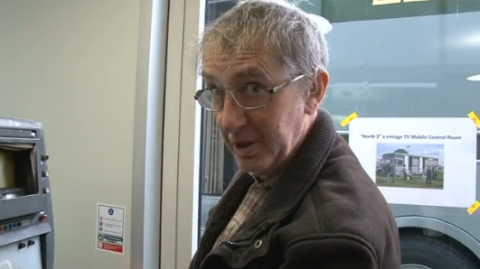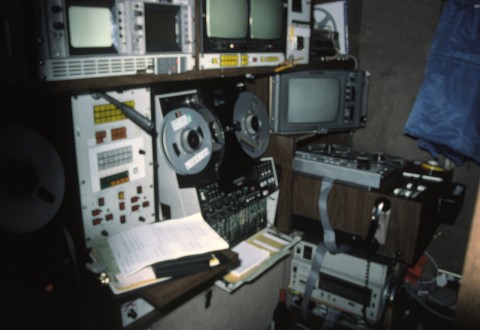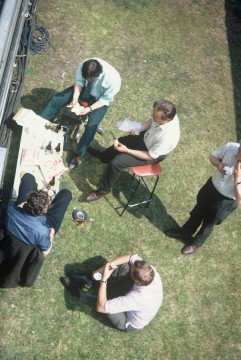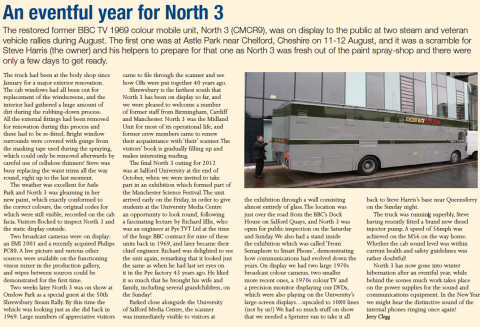Cameraman Malcolm Carr demonstrates the EMI 2001 camera from pebblemill on Vimeo.
Specially shot video with cameraman Malcolm Carr demonstrating the EMI 2001 studio and outside broadcast camera. The camera dates from the 1970s, and was a favourite amongst cameramen.
The camera was on display at a history of communication technology exhibition held at Salford University in October 2012.
The following comments were left on the Pebble Mill Facebook Group:
Peter Poole: ‘I used these cameras when on attachment to Norwich as a Tech Op. Like most of their equipment they were in poor condition. I spent hours trying to line them up. But the pictures still looked poor. I was glad to get back on sound!’
Alan Griffiths: ‘Nobody seemed to mind if you spent two days lining them up properly. Nowadays there would be an inquisition if it took that long!’
David Short: ‘Used this camera at TV Centre. A cameraman’s camera, if ever there was one. Everything in the ‘right’ place. A joy to operate.’
Keith Brook: ‘Well done Malcolm, good demo. If I may add a comment. Probably because of time, he missed an important point about the shot box and its use on drama. There were six buttons, with the ‘middle’ four generally set-up to represent ‘natural’ lens angles, 9deg, 18deg, 24deg and 36deg which gave you CU, MCU, MS and MLS. All the cameras, each day, were set up on the same chart. In a fast cutting sequence, this was the only way to accurately change shot sizes and still match the other cameras. Without that shot box, we wouldn’t have been able to shoot drama anywhere near the standard we did. For example, we did Poldark, a 50′ costume drama, in 50′. Yes, really. Manually zooming would have created so many retakes that the rhythm of the drama would have been lost, the momentum would have gone and we’d have been there all night. Incidentally, those lens angles, 9deg etc, were exactly the same angles as the four lenses on the old black and white cameras thus allowing the skills to transfer easily. Thank you EMI, for understanding cameramen. And thank you Malcolm.’
Pete Simpkin: ‘EMI were very good with TV camera design.In Southampton news we had the little brother of the one Malcolm was demonstrating , the 201… we had two operators there working three cameras so they had to be literally ‘handy’!’
cameraman Malcolm CarrSave
Save




